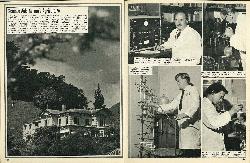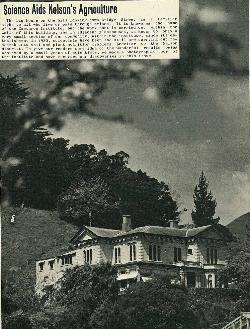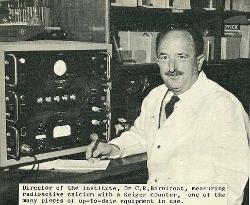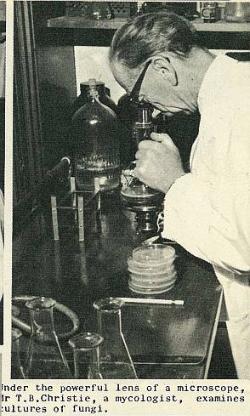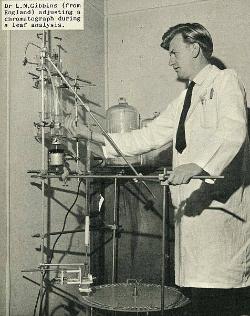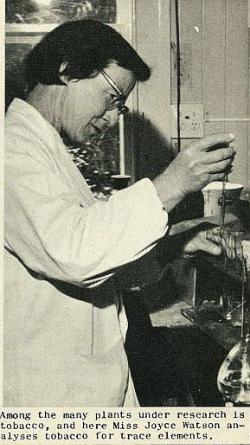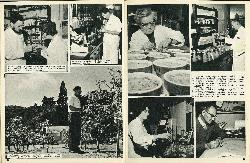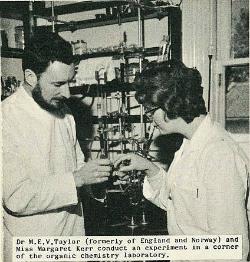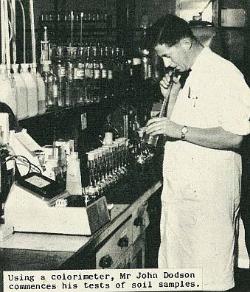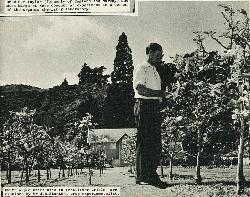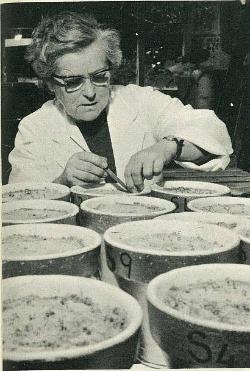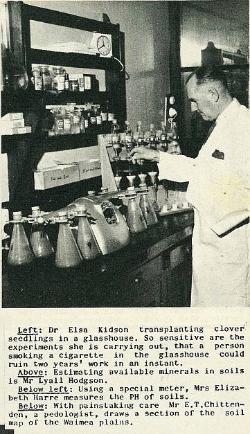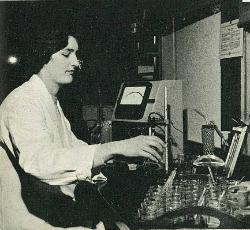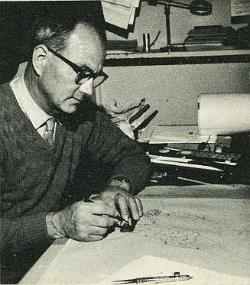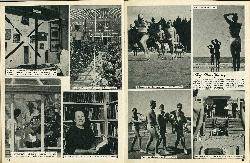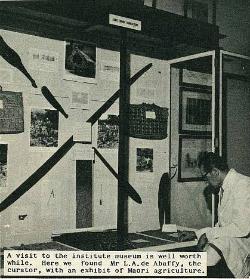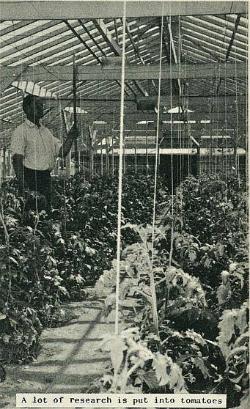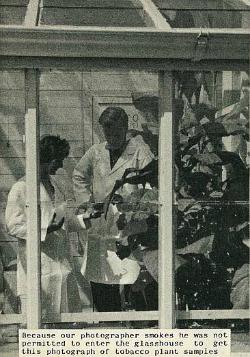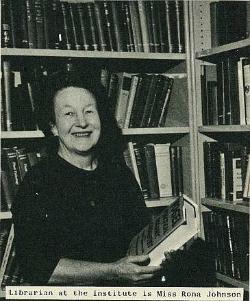40
Science Aids Nelson's Agriculture
The big house on the hill looking down Bridge Street is a familiar sight to all who live or pass through Nelson. It is known as the home of the Cawthron Institute, but the work that is carried out within the walls of this building, and in adjacent glasshouses, is known to only a very small section of our community. Within the institute, since its establishment in 1920, scientists have been and still are carrying out research into soil and plant nutrition problems peculiar to the Nelson district. To give our readers some idea of the wonderful results being achieved by a small group of scientists, we made a photographic tour of the institute and have recorded our discoveries in this issue.
41
Director of the institute, Dr C. R. Barnicoat, measuring radioactive calcium with a Geiger counter, one of the many pieces of up-to-date equipment in use.
Under the powerful lens of a microscope, Mr T. B. Christie, a mycologist, examines cultures of fungi.
Dr L. N. Gibbins (from England) adjusting a chromatograph during a leaf analysis.
Among the many plants under research is tobacco, and here Miss Joyce Watson analyses tobacco for trace elements.
42
Dr M. E. V. Taylor (formerly of England and Norway) and Miss Margaret Kerr conduct an experiment in a corner of the organic chemistry laboratory.
Using a colorimeter, Mr John Dodson commences his tests of soil samples.
Dwarf apple trees used in fertiliser trials are examined by Mr J. D. Stanton, crop experimentalist.
43
Dr Elsa Kidson transplanting clover seedlings in a glasshouse. So sensitive are the experiments she is carrying out, that a person smoking a cigarette in the glasshouse could ruin two years' work in an instant.
Estimating available minerals in soils is Mr Lyall Hodgson.
Using a special meter, Mrs Elizabeth Harre measures the PH of soils.
With painstaking care Mr E. T. Chittenden, a pedologist, draws a section of the soil map of the Waimea plains.
44
A visit to the institute museum is well worth while. Here we found Mr L. A. de Abaffy the curator, with an exhibit of Maori agriculture.
A lot of research is put into tomatoes
Because our photographer smokes he was not permitted to enter the glasshouse to get this photograph of tobacco plant samples
Librarian at the institute is Miss Rona Johnson


